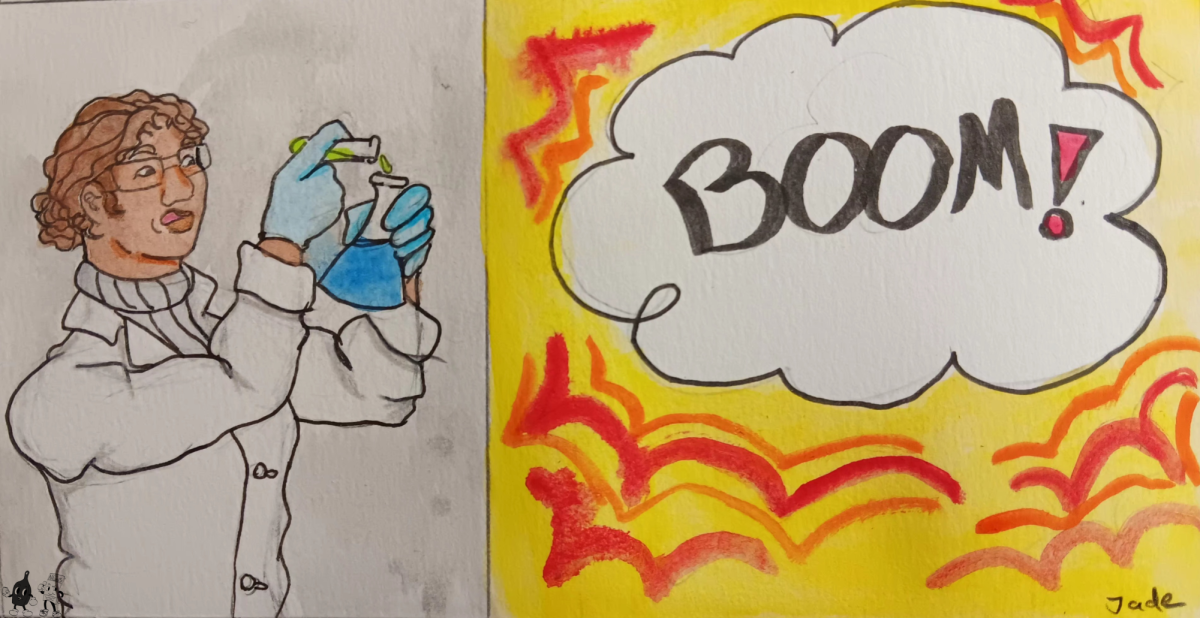Humans are almost always, inexplicably, drawn to destruction. Sources like BBC science focus will say that this is because destruction gives us a feeling of power, however, many would argue that it also provides a thrill of disobedience. While it’s important (for obvious reasons) not to cause TOO much destruction in everyday life, there are some times and places to disobey.
Almost everyone has probably seen a science experiment in school or online with a warning: don’t try this at home. Most people have also made the mistake of letting those five words dissuade them. Now don’t misunderstand, there are times when listening to professionals is incredibly important to prevent blowing up a trashcan or any other suspicious things people see on Instagram, but if one takes the time to understand the chemistry behind a reaction, experimentation can be safe to do at home.
Take the reaction of crystal drano, aluminum, and water for example. The main reaction can be written as 2 Al + 3 H2O –> Al2O3 + H2 which just says that when water and aluminum combine (with a catalyst), they produce aluminum oxide and hydrogen. The drano, otherwise known as sodium hydroxide is the catalyst. In non science terms– it speeds up the reaction. WARNING: crystal drano is designed to dissolve things that clog drains, it is also capable of dissolving people. So wear gloves and be careful.
So what should a person do with this odd information? Go to ACE hardware and buy crystal drano obviously! Now don’t just go drinking chemicals or something, remember to follow instructions while being destructive.
- Go outside. There is a secondary reaction in this experiment that produces ammonia which is toxic to breathe. Also, ensure a large distance from anything highly flammable such as propane.
- Then take a dinner plate or something similar and place it in a driveway or the road (obviously not the road if it’s a busy one, come on guys).
- Take about 1 square foot of aluminum foil and fold it into about a 6×4” rectangle to fit it on the plate. Don’t get any ideas about eating it, this isn’t a girl dinner.
- Make a small divot in the center of the aluminum like a bowl and add 1-2 Tbsp of water and 1 tsp of drano. Do NOT mix up these ratios. Needless to say, the ratios are designed based upon the molar ratio of the reaction and are an important aspect of the safety of the reaction. Changing it or adding different amounts of the reactants will not end well.
- Wait five minutes… I know it’s anticlimactic right?
And then, out of the blue… a reaction! What is this reaction? Well, to learn that one would need to go find some crystal drano and get working. Groan at the screen all you want, where would the fun be if people get the answer before they ask the question?
Provided are a few hints and extra secrets about the reaction: When ammonium nitrate is heated in the presence of sodium hydroxide, it reacts to make ammonia and sodium nitrate. The reaction formula is: NH4-NO3 + NaOH –> NH3 + NaNO3 + H2O. Another fun fact, the gasses it produces are flammable! This means that if someone were to manage to capture it they could produce either a hot air balloon of a bomb. Preferably an air balloon, but the instructions for that project will not be included.
Products of reactions like this one, (Hydrogen, ammonia, ammonium hydroxide, and water) have been used throughout history to create new innovations such as old internal combustion engines, hydrogen balloons, cleaning supplies, and more. Scientists are continuing to look into hydrogen based fuel cells and hydrogen powered cars to work towards a greener future. Yes, science extends beyond the classroom (unlike the quadratic formula).
Overall, chemistry and science exist everywhere either forgotten or feared but students can harness their power to learn. After all, what do humans value beyond destruction and control? Knowledge, of course. So go read a chemistry book and find more reactions to perform for some neighbors.
For the many people who most definitely prefer videos to paper words, the Chem Lab is a Youtube account to teach chemistry; there are many accounts who teach experimentation in a safe way such as TED Talks and other educational platforms. After all, normal people can do chemistry too. Take that Einstein!





